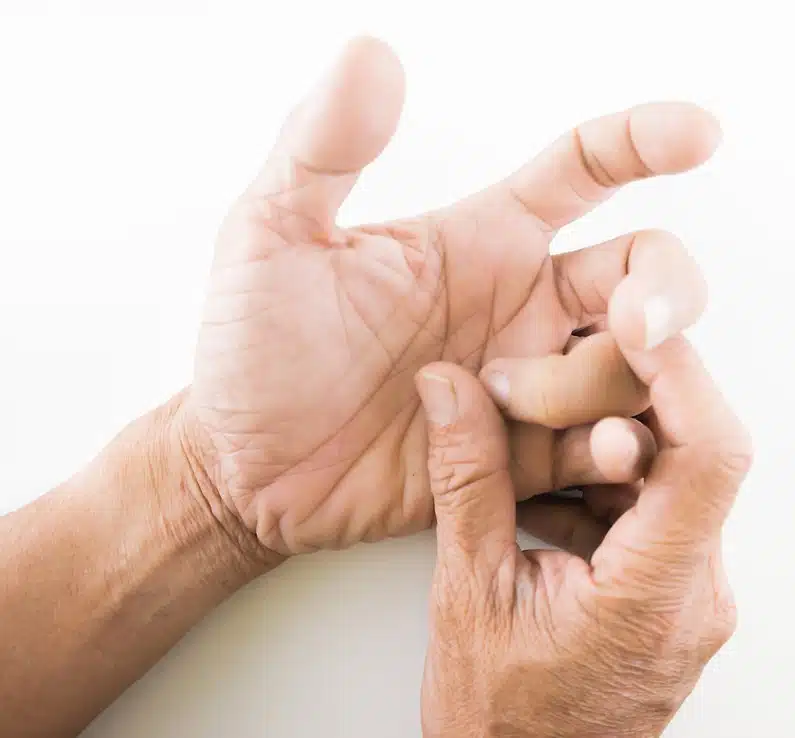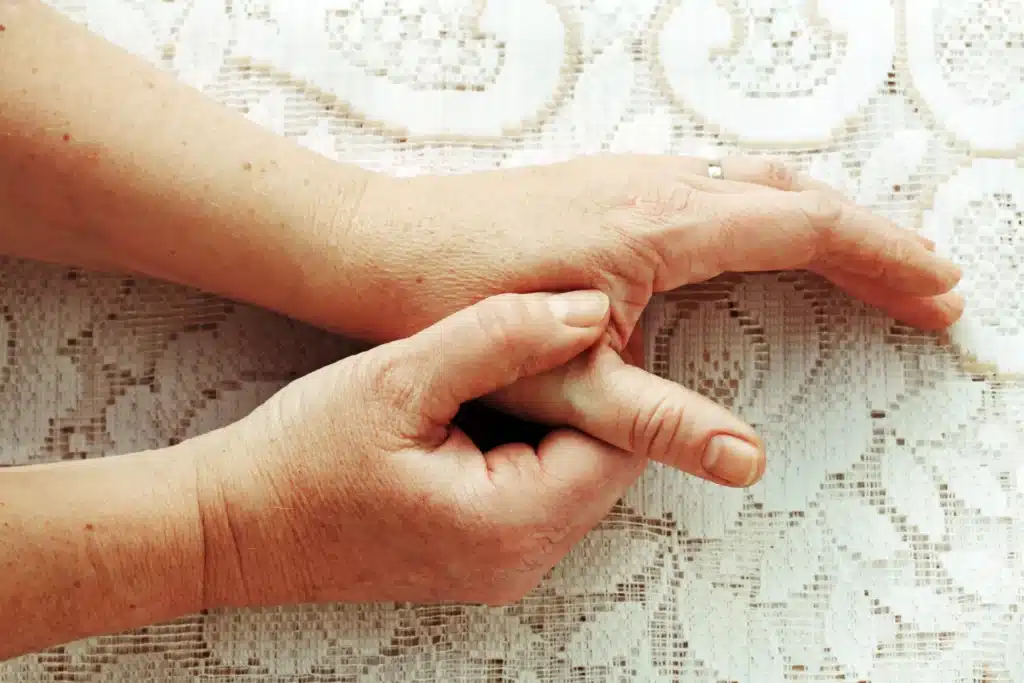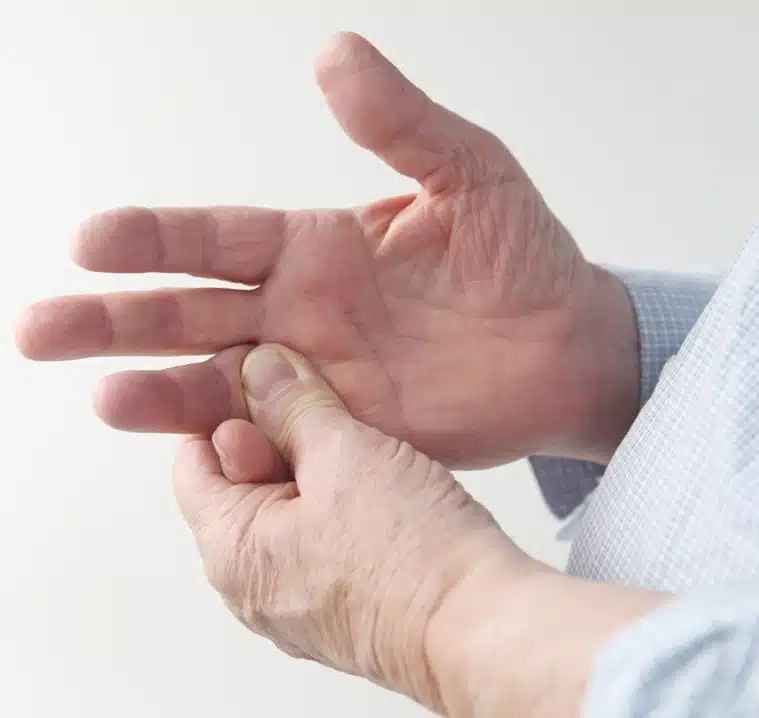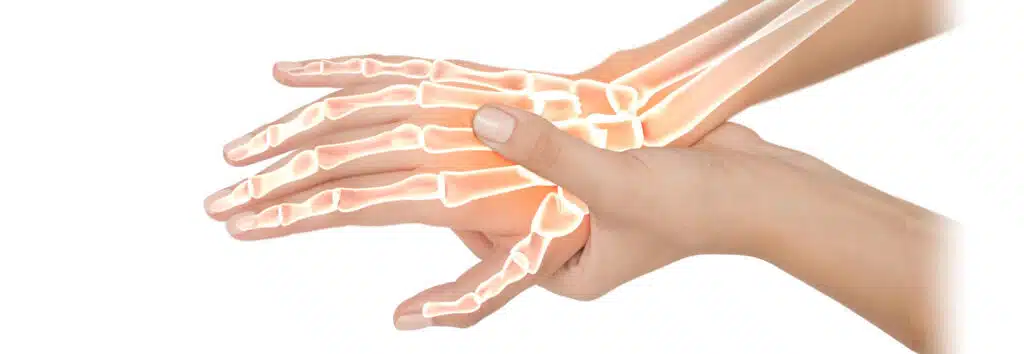This website uses cookies so that we can provide you with the best user experience possible. Cookie information is stored in your browser and performs functions such as recognising you when you return to our website and helping our team to understand which sections of the website you find most interesting and useful.
Nerves Of The Hands
In your hand, several important nerves provide both sensory and motor functions. Here are some of the key nerves in the hand:
Median nerve: This nerve is one of the major nerve pain in the hand. It travels through the wrist in a structure called the carpal tunnel. The median nerve provides sensation to the palm of the hand, the thumb, the index finger, the middle finger, and half of the ring finger. It also innervates certain hand muscles, including those responsible for thumb movement and grip strength.
Ulnar nerve: Another major nerve in the hand, the ulnar nerve runs along the inner side of the arm and passes through the wrist and hand. It provides sensation to the pinky finger and half of the ring finger. Additionally, the ulnar nerve innervates certain hand muscles responsible for fine motor control and grip strength.
Radial nerve: This nerve travels along the outer side of the arm and branches into the hand. It provides sensation to the back of the hand, the thumb, and the index finger. The radial nerve also innervates muscles in the hand that control wrist extension and thumb movement.
Digital nerves arise from the median, ulnar, and radial nerve pain and branch into the fingers. They provide sensation to the fingertips.
Dorsal cutaneous branch of the ulnar nerve: This nerve provides sensation to the back of the hand and the pinky finger.
Superficial branch of the radial nerve: This nerve supplies sensation to the back of the hand and the area around the thumb.
These nerves work together to provide sensory feedback (such as touch, temperature, and pain sensation) and motor control (muscle movement) to the hands, allowing for intricate movements and manipulation of objects. Damage or injury to these nerves can result in sensory loss, weakness, or dysfunction in the hands and fingers.
Nerve pain in the hands can have various symptoms, depending on the nerve affected and the underlying cause. Symptoms include:
Sensations of numbness, tingling, or “pins and needles” in the hands or fingers can indicate nerve compression or irritation. This sensation may be localized to specific fingers or may affect the entire hand.
Weakness in the hands or fingers may occur due to nerve damage, leading to difficulty in gripping objects, performing fine motor tasks, or maintaining hand coordination.
Nerve pain in the hands can present as sharp, shooting, burning, or stabbing sensations. The pain may be constant or intermittent and can vary in intensity. It may radiate along the path of the affected nerve or be localized to specific areas of the hand.
Reduced or loss of sensation in the hands or fingers can result from nerve damage. This may manifest as difficulty detecting temperature changes, decreased ability to feel touch or pressure, or loss of proprioception (awareness of the position of the hands and fingers).
Muscle atrophy – Chronic nerve damage can lead to muscle weakness and wasting (atrophy) in the hands and fingers. This may result in visible changes in muscle bulk, decreased grip strength, and difficulty performing tasks that require manual dexterity.
Difficulty with coordination – Nerve hand problems can affect coordination and fine motor skills, making it challenging to perform precise movements or tasks requiring hand-eye coordination.
Changes in reflexes, such as diminished or exaggerated responses to stimuli, may indicate nerve dysfunction in the hands.
Symptoms of nerve pain in the hands can vary depending on the underlying cause, including conditions such as carpal tunnel syndrome, cubital tunnel syndrome, peripheral neuropathy, nerve entrapment, nerve injury, or systemic diseases such as diabetes or autoimmune disorders.
Treatment for hand nerve injuries depends on the specific type and severity of the injury. They include:
Conservative treatments may be sufficient for mild nerve injuries, such as nerve irritation or compression without significant damage. These may include rest, activity modification, splinting to immobilize the hand or wrist, and physical therapy to improve strength, flexibility, and nerve function.
Medications: Pain medications, such as nonsteroidal anti-inflammatory drugs (NSAIDs) or neuropathic pain medications, may be prescribed to alleviate nerve pain and discomfort associated with nerve injuries.
Corticosteroid injections: In cases of nerve inflammation or compression, Dr. Pournaras may use corticosteroid injections to reduce inflammation and alleviate symptoms.
Electrical stimulation: Techniques such as transcutaneous electrical nerve stimulation (TENS) or neuromuscular electrical stimulation (NMES) to help manage pain, improve circulation, and promote nerve regeneration.
Occupational therapy: to help patients with hand nerve pain regain functional independence and optimize hand function through activities, exercises, and adaptive strategies tailored to their specific needs.
Customized braces or splints may be recommended to support and protect the hand, stabilize injured nerves, and promote optimal healing and recovery.


The causes of nerve pain or problems include:
- Nerve Injury – from the nerve being stretched, cut or crushed
- Compressive Nerve Disorders – Pressure by tight internal fibrous bands, bone spurs, tight muscles or abnormal structures such as tumors, gout, broken bones, etc
- Nerve Tumors – abnormal growths in or around the nerves that affect their function
- Inflammation or Infection
- Peripheral Neuropathy –Damage caused by diseases such as diabetes, hypothyroidism, or kidney disease
Nerve Injury, Compressive Nerve Disorders , and Nerve Tumors may require surgery to restore function in the damaged nerve.

Nerve Injuries
Injured nerves in the hand and the upper extremities:
- Ulnar nerve
- Radial nerve
- Digital nerves
- Brachial plexus
- Axillary nerve
- Median nerve
Causes of Nerve Injury
- Sudden excessive pulling/stretching
- Cutting
- Crushing
- Deep burns or electrical injury
Common causes of nerve pain in the hand are car accidents, work-related injuries, accidents with knives and other sharp objects, and sports accidents. Nerves damaged by infection or inflammation are generally not repairable; nerve or tendon transfer surgery may be an option to help improve the function of the hand.

Nerve repair: When a nerve is severed or cut, surgical repair may be necessary to reconnect the two ends and restore continuity. This procedure involves identifying the proximal (closest to the nerve’s origin) and distal (closest to the nerve’s target) ends of the injured nerve and suturing them together under magnification using microsurgical techniques. Nerve repair is typically performed as soon as possible after the injury to optimize outcomes.
Nerve grafting: In cases where there is a gap between the proximal and distal ends of the injured nerve that cannot be directly repaired, nerve grafting may be performed. This involves harvesting a segment of nerve tissue (often from a donor nerve, such as the sural nerve in the leg) and using it to bridge the gap between the two ends of the injured nerve. Nerve grafting allows for the regeneration of nerve fibers across the graft site and the restoration of nerve function.
Nerve transfer: In some cases of severe nerve pain or irreparable nerve injuries, nerve transfer surgery may be considered. This involves transferring a healthy nerve from another part of the body to the injured area to restore function. Nerve transfer surgeries are often used when there is a lack of suitable donor nerves for grafting or when direct repair is not feasible.
Nerve decompression: In cases of nerve compression or entrapment syndromes, such as carpal tunnel syndrome or cubital tunnel syndrome, surgical decompression may be performed to relieve pressure on the affected nerve. This procedure involves releasing constricting structures or enlarging the space around the nerve to alleviate compression and restore normal nerve function.
Nerve re-routing: In complex cases of nerve injury or dysfunction, nerve re-routing surgery may be considered. This involves surgically redirecting healthy nerves to innervate areas affected by nerve damage, bypassing the injured segment and restoring function.
Neurolysis: Neurolysis is a surgical procedure aimed at removing scar tissue or other obstructions that may be compressing or impeding nerve function. By freeing the nerve from surrounding adhesions or scar tissue, neurolysis can help improve nerve conduction and alleviate symptoms associated with nerve damage.
Tendon transfer: In cases where nerve damage results in severe muscle weakness or paralysis, tendon transfer surgery may be performed to restore movement and function. This involves transferring a tendon from a functional muscle to a paralyzed muscle to provide strength and improve function.

Call Us Today To Make An Appointment.
Nerve pain can influence treatment decisions for hand nerve injuries, considering factors like cause, extent, and overall health. Early intervention and comprehensive management are vital for optimizing outcomes and relieving nerve pain.
Make Your Appointment Today
Fair Oaks Orthopedics – Fairfax,VA

FAIR OAKS ORTHOPEDICS
3998 Fair Ridge Dr., Suite 100
Get Directions
Hours:
Mon 8:00 am – 4:30 pm
Tue 8:00 am – 4:30 pm
Wed 8:00 am – 4:30 pm
Thu 8:00 am – 4:30 pm
Fri 8:00 am – 4:30 pm
Sat Closed
Sun Closed

